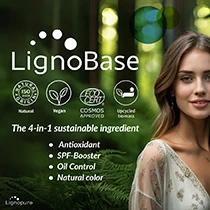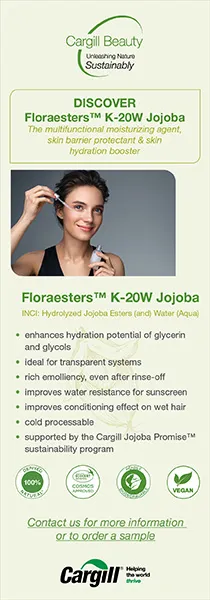UK Cosmetic association backs Defra’s chemical ban extension “to ensure robust” protection

18 Aug 2022 --- The Cosmetic Toiletry & Perfumery Association (CTPA) has shown support for “option one” – extending the deadline for regulating substances that are carcinogenic, mutagenic and reprotoxic (CMR) and deadly to aquatic organisms. The association also urges cosmetic companies to submit their response to the consultation by September.
“CTPA considers that this proposal will be the most beneficial for the future of the UK cosmetics and personal care industry. Extending the deadlines by three years will not decrease the protection offered to health and the environment,” Dr. Emma Meredith, director-general at CTPA, tells PersonalCareInsights.
“Longer deadlines will still ensure robust protection of human health and the environment in the UK because they will maximize the opportunity for the industry to produce as high-quality dossiers as possible and to provide in-depth training to businesses across the chemicals sector on how to comply with UK REACH.”
CTPA’s opinion responds to the Department for Environment Food & Rural Affairs (Defra) “consultation on extending the UK REACH submission deadlines.”
“Currently, the UK REACH registration requirements parallel those in the EU,” adds Meredith. UK REACH is a regulation applicable to chemical substances manufactured or imported into Great Britain, England, Scotland and Wales. The regulation was brought into UK law in January 2021.  Meredith underscores that companies should continue to liaise with their suppliers to understand their plans to comply with UK REACH.
Meredith underscores that companies should continue to liaise with their suppliers to understand their plans to comply with UK REACH.
What is option one?
Option one outlines extending the deadlines by three years: regulating 1,000+ tons of substances (per year) to 27 October 2026. The option also delays regulating 100+ tons of substances of very high concern (SVHC) (per year) to October 2028 and 1+ ton of substances (per year) to October 2030.
In response, CTPA also suggests splitting the last tonnage band (one to 100 tons) into two phases: 50 to 100 tons with a deadline of October 2029 and 1 to 50 tons with a deadline of October 2030.
“The Health and Safety Executive (HSE) is already working to prioritize and act upon any chemicals of concern, and owing to previous EU registration obligations, the chemicals in use by the cosmetics industry already have a very large amount of safety data associated with them, which is shared throughout the supply chain.”
“The Government’s Impact Assessment has also found that extending the deadlines will not decrease the level of protection,” she continues.
Longer deadlines for better protection
Defra’s consultation outlines that extending the deadline by three years would give the government time to introduce the alternative model and some more time for companies to prepare.
“If the Government’s review of the current UK REACH legislation results in a new model, the REACH registration requirements of the new model are not yet clear to industry. Without understanding which obligations will be in place, longer deadlines best account for the uncertainties on time and cost requirements,” outlines Meredith.  Longer deadlines will maximize the opportunity for the industry to produce as high-quality dossiers, states CTPA.
Longer deadlines will maximize the opportunity for the industry to produce as high-quality dossiers, states CTPA.
“A longer deadline is more likely to harmonize the development of the new UK REACH model with other ongoing UK Government chemicals management initiatives, such as the UK Chemicals Strategy,” highlights Meredith, on the importance of taking a holistic approach, parallel across topics.
Longer deadlines, flags Meredith, will allow the industry to spread the costs over a longer time, increasing the opportunity to invest in other areas such as research, innovation and sustainability initiatives.
“They will also allow supply chains to adapt to changes that may happen, such as any change of supplier or formulation changes to substitute ingredients, thereby minimizing disruption to consumers and businesses.”
Advise for the industry
Meredith explains that CTPA has offered numerous training and webinars on UK REACH for the past five years. “CTPA will continue to deliver these training sessions to industry, with the view of intensifying them once the new model for UK REACH registrations is finalized.”
“It is essential that companies familiarize themselves with their roles and responsibilities under UK REACH. When required, downstream users will need to work with their suppliers to provide information regarding their use of a substance, in addition to any new information on the hazard or risk management,” she continues.
“CTPA continues to advise companies to monitor their supply chain to have a full overview of the identity and quantity of cosmetic ingredients imported from the EU as raw materials or within finished products.”
Meredith underscores that companies should continue to liaise with their suppliers to understand their plans to comply with UK REACH, as this may allow downstream users to maintain their status.
“In the meantime, it is always good to keep engaged with the developments of UK REACH and prepare for the possibility to register chemicals or possible changes to the supply chain.”
Additionally, Meredith says that if businesses communicate real-world implications of the legislation to the Government, it can open a dialogue on how the legislation could still evolve.
EU regulatory shake up
The EU recently revised the Classification, Labeling and Packaging (CLP) of Substances and Mixtures, which outlines the use of chemicals, 12 of which are relevant for cosmetics use and six of which are classified as CMR.
“The products available on the market have to be withdrawn. The classification of the substances at CLP directly applies to all products, cosmetics or not,” Elisa Esteve, regulatory affairs manager and media content creator at Cosmeservice, previously told PersonalCareInsights.
Additionally, Aurélie Perrichet, regional director Europe at the International Fragrance Association (IFRA), told us that IFRA’s main concern coming from the EU Chemicals Strategy for Sustainability – a sub-strategy of the European Green Deal – is the move toward hazard-based regulatory instruments.
“A hazard-based approach regulates substances on the basis of their intrinsic properties, without taking account of the exposure to the substance. A risk-based approach takes into account the exposure.”
The European Commission also published an amended regulation regarding a limit to the use of the UV filters Benzophenone-3 and Octocrylene in cosmetic products due to endocrine-disrupting properties flagged by the Scientific Committee on Consumer Safety.
By Venya Patel












